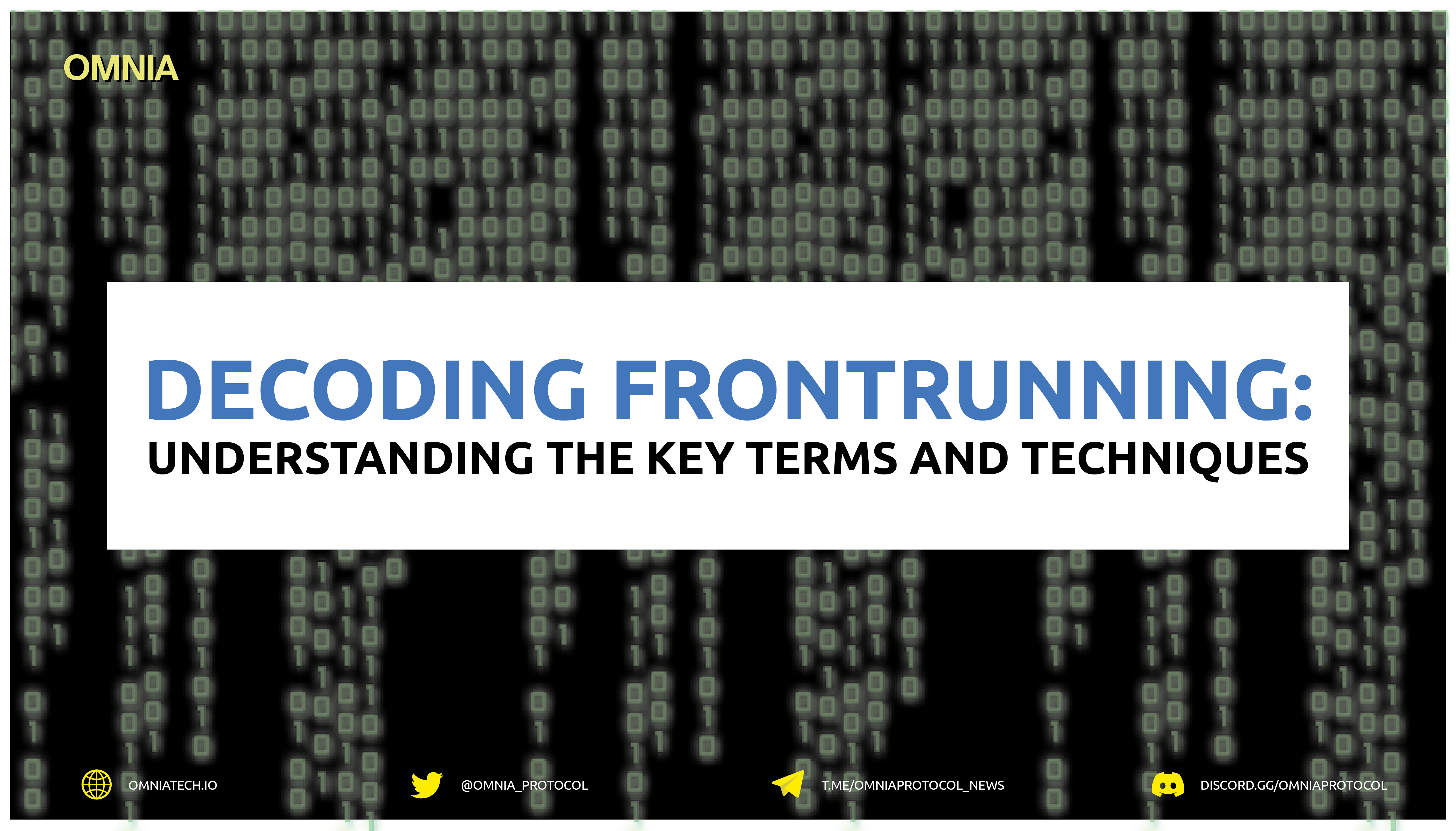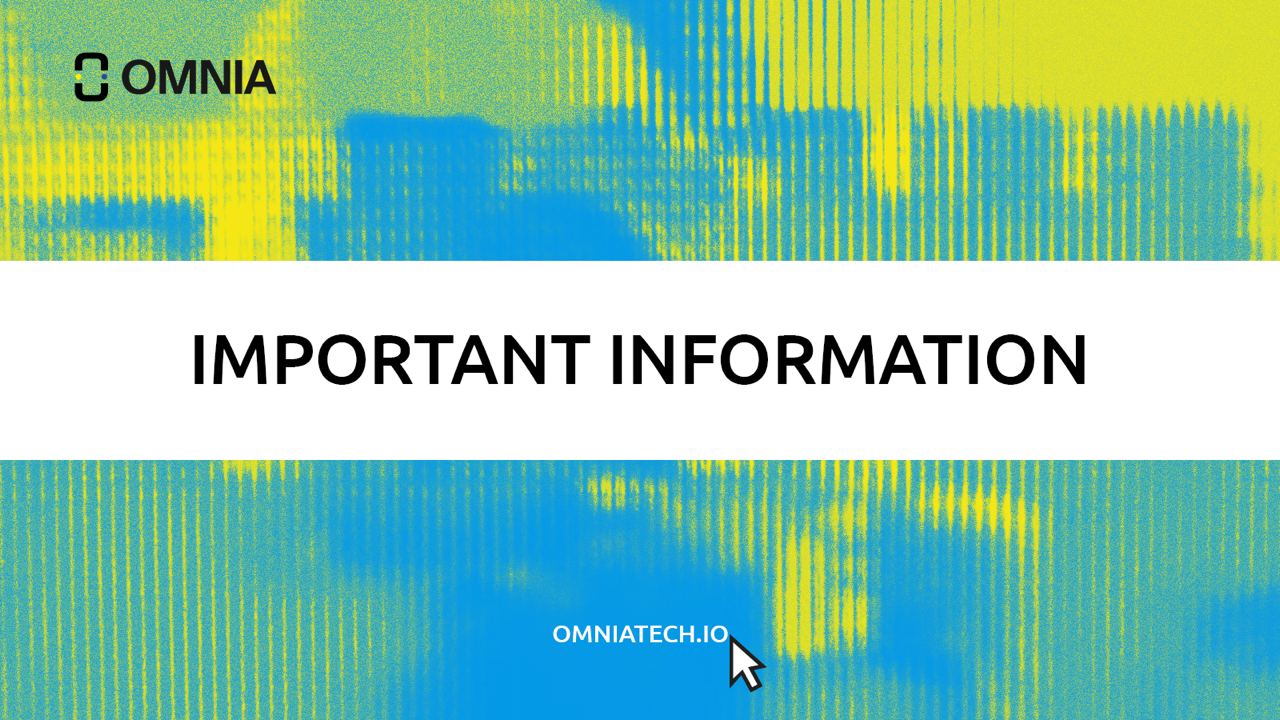
Decoding Frontrunning: Understanding the Key Terms and Techniques
What is Frontrunning?
Frontrunning is the practice of executing a digital asset trade based on knowledge obtained in advance that will affect its price. The purpose of frontrunning is to profit at the expense of others. This is done by gaining a price advantage over others in the market before the market reacts to the information. In traditional financial markets, frontrunning is considered illegal and unethical. In the open blockchain market, frontrunning is widespread and lucrative, and has fundamentally and unfortunately, evolved into multi-billion-dollar unethical practice.
Frontrunner bots scan the blockchain network for transactions that they can exploit. Frontrunning, in the context of decentralized exchanges (DEXs) like Uniswap or Sushiswap, refers to the act of executing trades ahead of others to profit from the price movements that are caused by the original trade. This can allow bots to monitor the network for trades and place trades ahead of the original trade to capture the price movement caused by the original trade. In a DEX, transactions processed are publicly visible on the blockchain. To prevent frontrunning, obscuring the details of an order is required, this makes it harder for a frontrunning bot to detect the order and execute a trade ahead of the original order. Batch processing, order randomization and OMNIA secure endpoints are measures used by DEXs to reduce frontrunning.
Blockchain holds a limited amount of transactions per block during a constrained time frame, thus leaving room for pending transactions, which are housed in mempools. But, of course, with the popularity of blockchain and transactions occurring simultaneously, if you go on Etherscan and view pending transactions at any moment, more than 150,000 pending transactions may be waiting at any moment, leaving room for vulnerability to frontrunning bots within these mempools. To mitigate some of the risks, one needs to make transactions hard to pick off in the mempool. Omnia’s solution hides the pertinent transaction information, rendering the transaction unattractive for frontrunning.
What is the importance of frontrunning within the cryptocurrency market?
Frontrunning is a form of market manipulation where traders take advantage of pre-market knowledge of an order to buy or sell a cryptocurrency before the order is executed. Frontrunning occurs in everyday transactions.
One of the main differences is the decentralized nature of the cryptocurrency market. Unlike traditional financial markets, which are centralized and regulated, the cryptocurrency market can be decentralized and largely unregulated. This can make it more difficult to detect and prevent frontrunning, as no central authority oversees the trading activity.
Another difference is the high volatility of the cryptocurrency market. Prices of cryptocurrencies can fluctuate rapidly and unpredictably, creating more opportunities for traders to engage in frontrunning.
Additionally, the anonymity of certain exchanges and trading platforms that used to allow crypto trading can also be a factor that makes frontrunning more prevalent in the crypto market, as it can be more challenging to detect and trace trades.
A mempool is a pool of unconfirmed transactions waiting to be picked up by a miner and included in the next block. Some traders pay a higher gas fee to increase the priority of the transaction to be included in the next block, therefore transactions may potentially be processed faster and reduce the time it sits in the mempool.
Frontrunning 101: Demystifying the Jargon and Techniques
We want to simplify the jargon to understand critical concepts. Below are some key terminologies being used alongside frontrunning:
- NFT frontrunning
- NFT front running refers to a situation where individuals with privileged access to the blockchain network use their advantage to purchase NFTs before others, leading to higher prices and unfair advantage. In the NFT trading world, frontrunning can occur through two methods:
- Utilizing advance knowledge of an announcement, partnership, or news that could positively impact a specific project to purchase NFTs in the open market.
- Manipulating blockchain data to place an NFT order ahead of another, with the intention to sell the NFT promptly or at a higher price later on.
- We have written an article going into the specifics of NFT Frontrunning.
- NFT front running refers to a situation where individuals with privileged access to the blockchain network use their advantage to purchase NFTs before others, leading to higher prices and unfair advantage. In the NFT trading world, frontrunning can occur through two methods:
- Pre-mining transactions
- Pre-mining transactions are transactions that occur prior to a cryptocurrency’s public launch. This practice involves the cryptocurrency’s founders minting coins or tokens before a public sale, or ICO, and selling them to investors or themselves. Premining can be a controversial practice, as it can be seen as a form of frontrunning – allowing the founders of the cryptocurrency to buy the coins or tokens at a discounted price before the public launch, which can give them an unfair advantage.
- Private mempools
- Private mempools may reduce the risk of front-running by making it harder for third parties to observe a user’s pending transactions. In a private mempool, the user’s transactions are kept confidential and are not broadcasted to the public network. This makes it more difficult for potential front-runners to intercept the transactions and place their own orders ahead of the original transactions in an attempt to profit from the price movements. However, it’s important to note that while private mempools can reduce the risk of front-running, they do not completely eliminate it. A recent article published by OMNIA, dives deeper into frontrunning protection and details ways of securing transactions through private mempools.
- Market making
- Market makers add liquidity in a crypto market by providing either buy and sell orders for crypto assets. Market makers offer to buy and sell orders at different prices so that someone is always willing to buy or sell a crypto asset at any given time. Market makers also provide liquidity to the crypto market by providing a continuous flow of orders that can be filled quickly and easily.
- Automated Market Makers
- Automated Market Makers (AMMs) are computer programs that use algorithms to determine the price of a cryptocurrency asset based on supply and demand.
- AMMs eliminate the need for a centralized exchange and allow for decentralized trading of crypto assets. They use mathematical formulas to calculate the price of an asset, and these formulas take into account the amount of the asset being traded, the number of buyers and sellers, and other factors.
- AMMs are used in decentralized finance (DeFi) to provide liquidity for various financial products, including stablecoins, synthetic assets, and other crypto assets.
- Dark pools
- Dark pools are private crypto trading places where large traders can execute large orders without the risk of market manipulation or frontrunning. Dark pools allow large crypto traders to buy or sell crypto assets in large blocks without the risk of the action’s impact on the market price. This helps to reduce slippage and market manipulation.
- Slippage
- Slippage refers to the discrepancy between the expected or desired trade price and the actual executed price. It often happens in markets with high volatility or low liquidity. The slippage rate calculates the deviation of an asset’s price from the time of ordering to execution. Crypto markets are highly unstable, with quick price changes, making them susceptible to slippage. To minimize slippage, limit orders are often used instead of market orders. Limit orders will only be executed at a stated price, whereas market orders are executed at market.
- High-Frequency Trading (HFT)
- It is a form of algorithmic trading that enables traders to take advantage of minor price discrepancies in the market, often on a sub-second level. As such, it has become increasingly popular in the crypto markets, allowing traders to take advantage of market inefficiencies. HFT relies on computer speed and fast infrastructure, so that trades can happen in milliseconds.
- Bots
- Bots are automated trading programs that use algorithms to buy and sell assets on the market. They are typically used by traders looking to gain an edge in the market by taking advantage of market inefficiencies. They can be programmed to monitor the market and execute trades based on predefined criteria.
- Sandwich Attack
- A sandwich attack is a type of frontrunning attack that involves placing orders to manipulate the market by buying and selling an asset simultaneously.
How does OMNIA contribute to the efforts of solving the problem at hand?
Recognizing the risks of frontrunning, OMNIA steps forward with a solution by allowing you to generate secure endpoints. The article on the benefits of switching your wallet’s RPC to OMNIA delves deep into the details. To sum it up, its secure endpoints can be connected to your wallet. Your traffic is protected from malicious attacks through the advanced mixnets and privacy relayers that redirect it.
OMNIA is proud to have completed its latest update, which includes frontrunning protection for Ethereum mainnet. This measure prevents bots from taking advantage of transaction fees by ordering them in a way that pumps the price of that asset so they can buy it and then sell it back, thus stealing your slippage. Our team of experts in cybersecurity and blockchain has developed a safeguard by forwarding your transactions to private mempools so that malicious bots won’t see them. Security and privacy are our top priorities at OMNIA.
The OMNIA protocol offers users distinct features that enhance the decentralization of blockchain networks and protect users against several shortcomings, including frontrunning. As stated in one of our detailed articles regarding NFT Frontrunning:
“The adoption of a neutral, public, open-source infrastructure for MEV extraction could change the game as it currently is, making frontrunning a thing of the past and effectively improving the efficiency of every transaction.”


